Pistons Aren't Round:
Profile and Ovality Explained
by Kevin Bailey at Wiseco
Originally printed in issue #80 of Still….Keeping Track
Profile and ovality are two main characteristics of piston design. Here we'll take a look at why pistons are designed to not be perfectly round.
When you look at a piston, it is easy to think that they are a perfectly round, cylindrical shape. After all, they go into a round hole (the cylinder!) So why shouldn’t they also be round?
The fact is, the external shape of a piston is very sophisticated. An internal combustion engine is a hostile environment where combustion gasses can reach dangerous temperatures, and there could be port windows and surface undulations from uneven cylinder cooling. Designing a piston that is optimized for combustion chamber conditions is an important challenge.
Throughout the years, piston materials and design characteristics to compensate for expansion under heat have evolved. Forging pistons out of aluminum provides great strength and durability, but it must be used in the correct design to properly optimize the performance of the piston.
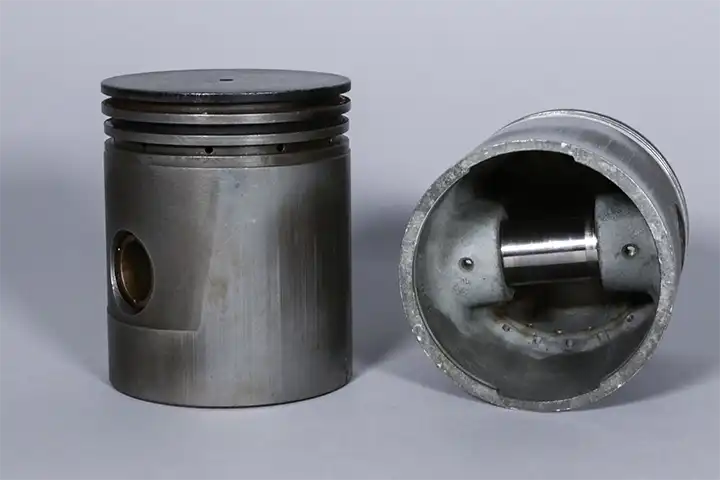
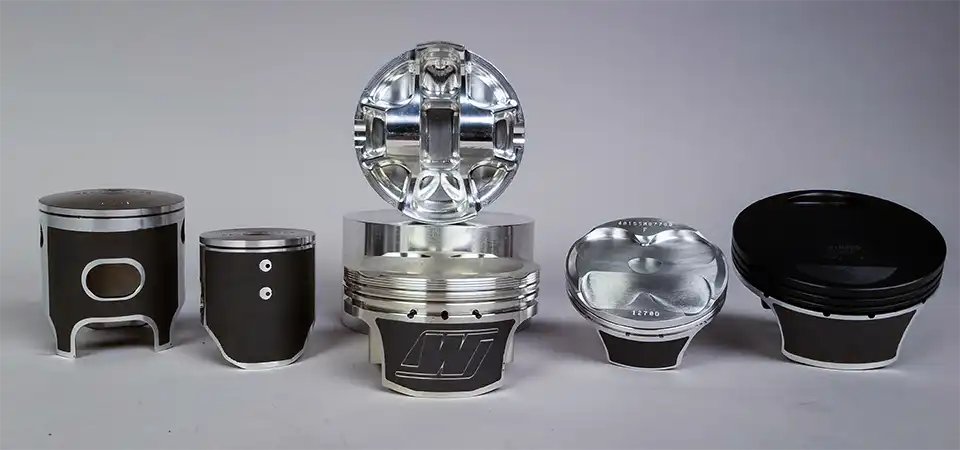
There are two major characteristics of piston shapes: profile and ovality. Wiseco's Product Manager and long time engineer Dave Sulecki commented on these piston characteristics: “Piston profile and ovality are one of the most important features of a piston, these really determine not only how the piston will wear over time, but also how well the piston can perform. When the engineer calculates the piston to cylinder clearance, this is only the beginning of a complex determination of the final piston geometry."
Profile
If you roll a piston across a flat surface, you'll notice it does not roll in a straight line. You are observing characteristic number one: profile. Because aluminum conducts so much heat, pistons are designed with a taper -- the top of the piston, near the crown, is a smaller diameter than the bottom of the piston, near the skirt. The skirt of the piston actually is designed with what is called a barrel shape, illustrated below. This is beacuase temperatures near the dome of the piston vary from the temperatures at the skirt of the piston, resulting in different levels of expansion. The tapered shape allows the piston to expand as heat is applied, so the piston does not bind in the cylinder bore. The higher the temperature, the more the piston will expand. The design challenge then becomes calculating the degree of taper. Too tight of clearance can induce scuffing or seizure from heat expansion, while too loose of clearance can introduce noise from piston rock.
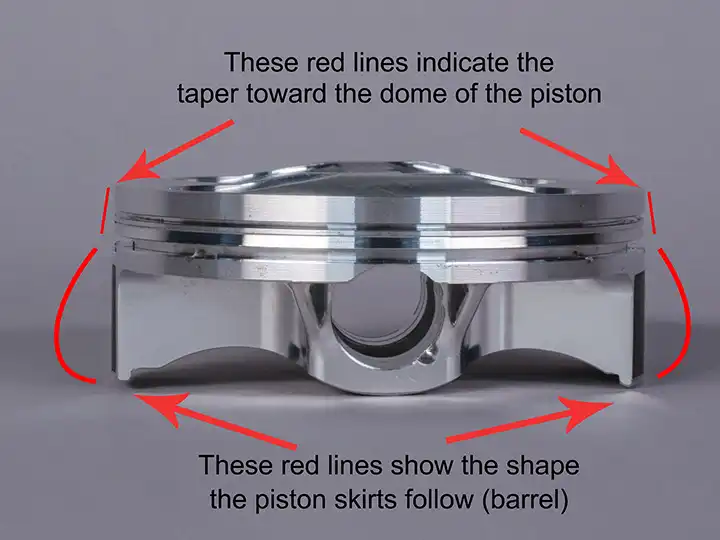
"The piston profile is critical to how the piston will support itself as it reciprocates in the cylinder bore. For example, the piston profile must help hold the piston vertical in the bore during combustion; imagine any excess leaning of the piston would allow piston rings to become “unseated” and not seal properly against the cylinder wall," elaborates Sulecki.
Ovality
As you roll the piston across the table, you will also observe the piston rising and falling in a “hump-hump-hump” motion, much like a wheel that has a flat spot. This characteristic is called ovality, also known as camming. In the simplest terms, ovality means that the piston is smallest in line with the wrist pin bore.
As the engine begins its movement, the connecting rod is not moving only up and down, but due to the rotation aspect is simultaneously moving sideways. This action from the connecting rod and the motion of the crankshaft place load forces on the piston along the plane of the connecting rod inline with rotation (known as the “thrust axis”). To allow the piston to move freely with this sidelong force, the piston cannot be perfectly round, or it would bind in the round cylinder bore. By applying ovality to the piston, the piston is free to move up and down as needed. The challenge in design is applying the proper amount of ovality. Too little ovality can cause the piston to contact the cylinder wall nearest the end of the piston pin, while too much ovality can cause the piston to ride too heavily against the cylinder wall along this “thrust axis.” Too much load along the thrust axis can result in heavy scuffing or seizure, when the piston breaks the oil film barrier and contacts the cylinder wall directly.
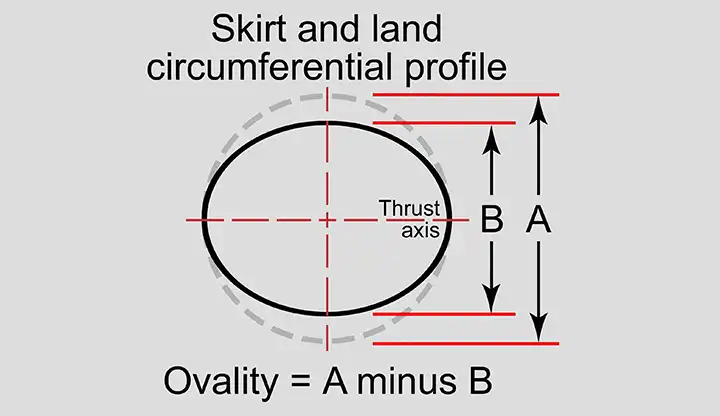
Dave Sulecki commented on ovality,
"Ovality is an unknown thing, when most people look at a piston they think it is round, and to the naked eye this must be the case. However, take a new two stroke piston and roll it across the table and what happens? You will see the uneven “hump, hump, hump” as the piston rolls in a large arc…you are seeing both the profile (the “cone shape” of the piston”, in combination with the ovality as the piston rolls unevenly. Ovality is necessary for the piston to move up and down in the cylinder bore, as the crankshaft and connecting rod try to force the piston upward, and combustion forces the piston downward, ovality allows the piston to move without binding in the round cylinder bore."
Ovality is a key detail to remember when measuring piston size. The piston must be measured at the bottom of the skirt, 90 degrees from the wrist pin hole to reach an accurate measurement.
When measuring piston diameter, be sure you’re using the proper tools. Do not use calipers to measure your piston(s), as you won’t get an accurate measurement. The most accurate tool to use is a set of outside diameter micrometers.
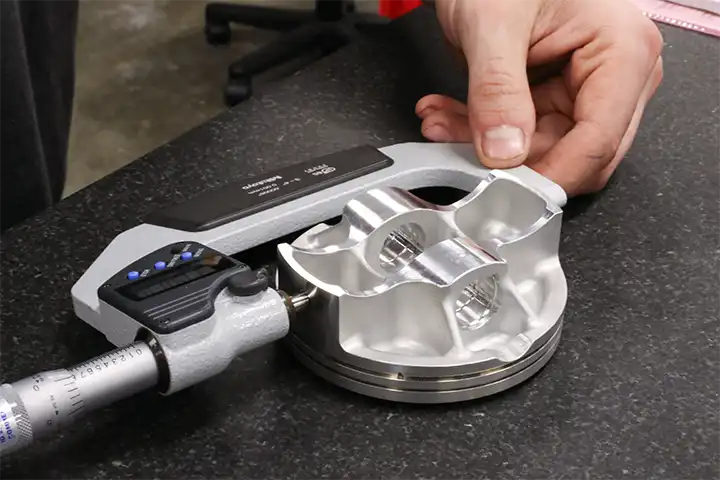
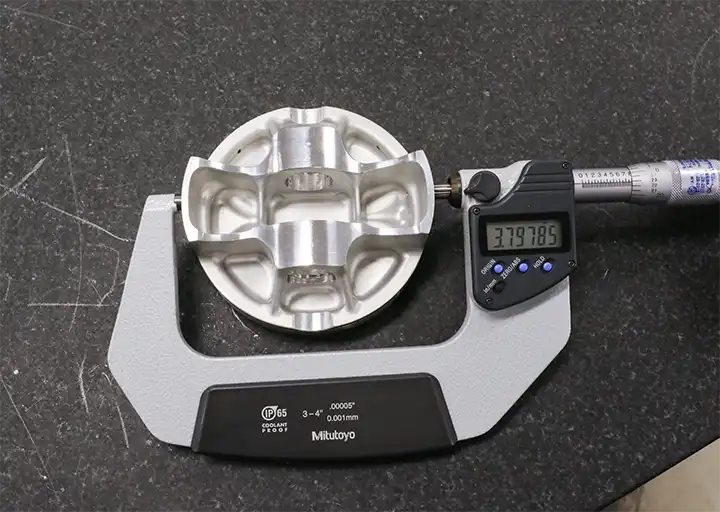
Some Wiseco pistons feature proprietary skirt coatings such as ArmorGlide or ArmorFit, which are designed to reduce wear, provide smoother and quieter operation, and are applied to last for the life of the piston. With certain skirt coated pistons, piston-to-wall clearance measuring specs will change, so be sure to read the instructions that come with your piston(s).


